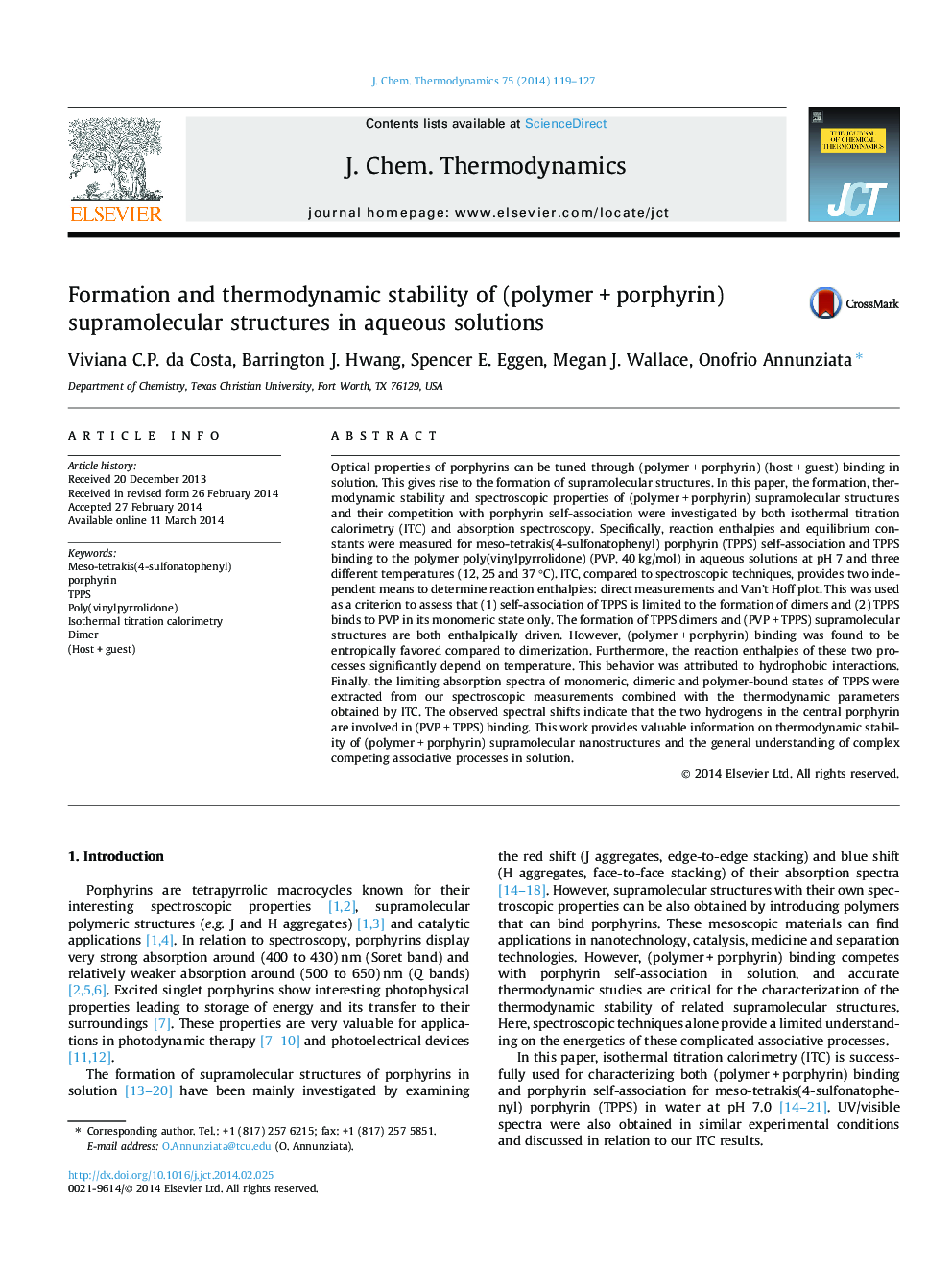| Article ID | Journal | Published Year | Pages | File Type |
|---|---|---|---|---|
| 215556 | The Journal of Chemical Thermodynamics | 2014 | 9 Pages |
•Thermodynamic stability of a (polymer + porphyrin) supramolecular structure was characterized.•Isothermal titration calorimetry provided two ways to determine reaction enthalpies.•Exothermic (polymer + porphyrin) binding competes with porphyrin self-association.•(Polymer + porphyrin) binding is entropically favored with respect to porphyrin self-association.•Spectral shifts show importance of porphyrin central hydrogens in polymer binding.
Optical properties of porphyrins can be tuned through (polymer + porphyrin) (host + guest) binding in solution. This gives rise to the formation of supramolecular structures. In this paper, the formation, thermodynamic stability and spectroscopic properties of (polymer + porphyrin) supramolecular structures and their competition with porphyrin self-association were investigated by both isothermal titration calorimetry (ITC) and absorption spectroscopy. Specifically, reaction enthalpies and equilibrium constants were measured for meso-tetrakis(4-sulfonatophenyl) porphyrin (TPPS) self-association and TPPS binding to the polymer poly(vinylpyrrolidone) (PVP, 40 kg/mol) in aqueous solutions at pH 7 and three different temperatures (12, 25 and 37 °C). ITC, compared to spectroscopic techniques, provides two independent means to determine reaction enthalpies: direct measurements and Van’t Hoff plot. This was used as a criterion to assess that (1) self-association of TPPS is limited to the formation of dimers and (2) TPPS binds to PVP in its monomeric state only. The formation of TPPS dimers and (PVP + TPPS) supramolecular structures are both enthalpically driven. However, (polymer + porphyrin) binding was found to be entropically favored compared to dimerization. Furthermore, the reaction enthalpies of these two processes significantly depend on temperature. This behavior was attributed to hydrophobic interactions. Finally, the limiting absorption spectra of monomeric, dimeric and polymer-bound states of TPPS were extracted from our spectroscopic measurements combined with the thermodynamic parameters obtained by ITC. The observed spectral shifts indicate that the two hydrogens in the central porphyrin are involved in (PVP + TPPS) binding. This work provides valuable information on thermodynamic stability of (polymer + porphyrin) supramolecular nanostructures and the general understanding of complex competing associative processes in solution.
Graphical abstractFigure optionsDownload full-size imageDownload as PowerPoint slide
